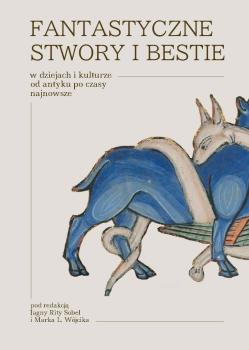Kampe – bestia morska i podziemna o hybrydalnym kształcie. Testimonia w literaturze i sztuce antycznej .......... 11
Synopsis
CAMPE – A MARINE AND SUBTERRANEAN MONSTER WITH A HYBRID SHAPE. TESTIMONIA IN ANCIENT LITERATURE AND ART
The paper reviews Greek and Roman literary testimonies describing Campe (Gk. Κάμπη), a mythical female monster killed by Zeus (Ps.-Apollodorus, Bibl. I 2.1; Nonnos, Dion. XVIII 237, 257) or Briareus, one of the Titans (Ov., Fast. III 805) or Dionysus (Diodorus, Bibl. III 72). Campe was a large monster standing as the guard for the Cyclopes and Hundred-Handers imprisoned in Tartarus. The Greek term κάμπη f. ‘a large sea-monster’, originally ‘caterpillar’, appears in the second member of the Greek appellative ἱππόκαμπος m. ‘hippocampus, a mythical sea-monster with the body of horse and the tail of a campe’, also ‘seahorse, Hippocampus L.’ (originally ‘half-horse, half-campe’). Ancient representations of hippocampi, demonstrating a great imagination of the Greeks and the Romans, can hardly be used for reconstructing a primitive figure of the large (probably fantastic) sea-animal called κάμπη, as well as the mythical monster Campe. Nonnus’ detailed description of Campe (D. XVIII 233–264) seems to duplicate characteristic features of the monster Typhon (Hesiod, Theogony 820 ff.). It is suggested that Campe can be represented as a kind of sea dragon in the Greek-Roman art (see especially Fig. 7 & 8).





